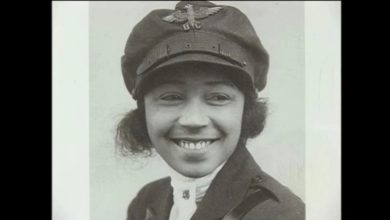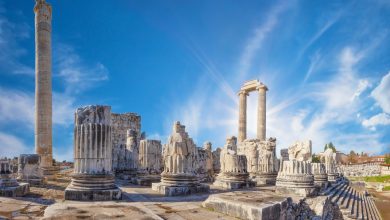Cool History Facts You Didn’t Learn in School

Welcome to “Cool History Facts You Didn’t Learn in School!” Have you ever wondered about the astonishing bits of history that often get left out of textbooks? This blog is here to uncover those hidden gems from the past, providing a treasure trove of fascinating stories and facts that will ignite your curiosity and broaden your knowledge.
By delving into lesser-known historical facts, we aim to shine a light on the intriguing and often surprising episodes that have shaped our world in unexpected ways. Get ready to embark on a thrilling journey through time, filled with marvels that will leave you inspired and eager to learn more about the wonders of history.
Section 1: Astonishing Ancient Civilizations
When exploring ancient civilizations, it’s fascinating to discover the advanced technologies and urban planning that were in place long before modern engineering. The Indus Valley Civilization, for instance, is renowned for its sophisticated grid system and efficient drainage network. Cities like Mohenjo-Daro and Harappa were laid out with remarkable precision, featuring meticulously planned streets in a grid pattern that suggests a high level of urban organization. Equally impressive is their drainage system, which included well-constructed underground drains and channels, highlighting an advanced understanding of sanitation and public health.
Similarly, the ancient Minoan civilization, flourishing on the island of Crete, showcased incredible technological advances, especially in their architecture and plumbing. The Minoans’ use of indoor plumbing was revolutionary, featuring complex piping systems that delivered fresh water and removed waste efficiently. Their architectural ingenuity is also evident in the grand palaces they built, such as the Palace of Knossos, which boasted impressive multi-story buildings, elaborate frescoes, and intricate floor plans. These achievements reflect a level of technological and artistic proficiency that continues to captivate historians and archaeologists today.
Section 2: Remarkable Historical Figures
One of the most extraordinary figures in ancient history is Hatshepsut, the female pharaoh who broke barriers and ruled Egypt with outstanding competence and vision. Ascending to the throne in a male-dominated society, Hatshepsut was not only a trailblazer but also a remarkably effective leader.
Her reign, lasting over two decades (circa 1478-1458 BCE), was marked by extensive trade expeditions, monumental building projects like the magnificent temple at Deir el-Bahri, and a period of relative peace and prosperity. Hatshepsut’s contributions laid the groundwork for Egypt’s future success, showcasing her formidable capability and enduring legacy.
Equally fascinating is Cleopatra VII, often remembered for her romantic liaisons with Roman leaders Julius Caesar and Mark Antony. Cleopatra was far more than her relationships; she was a shrewd and polyglot queen who spoke several languages, including Egyptian, Greek, and Latin. Her linguistic prowess enabled her to communicate directly with different peoples and forge crucial alliances.
Cleopatra’s political acumen and strategic brilliance helped her maintain her throne in a turbulent era, navigating the complex web of Roman and Egyptian politics with remarkable skill and intelligence. Her legacy continues to captivate and inspire, reflecting the power and influence she wielded in ancient history.
Section 3: Unexpected Historical Events
History is filled with unexpected and quirky events that defy conventional narratives, and the Great Emu War in Australia is a prime example. In 1932, the Australian government found itself embroiled in an unusual conflict against a formidable adversary: emus.
These large, flightless birds were wreaking havoc on farmlands in Western Australia, leading the military to deploy soldiers armed with machine guns to curb the emu population. Despite the firepower, the emus proved to be remarkably resilient and elusive, leading to a comically ineffectual campaign that ended in the birds’ triumph and the government’s embarrassment.
Another peculiar historical episode is Operation Paul Bunyan, a bold show of force by the United States in response to a seemingly trivial tree-cutting incident in the Korean Demilitarized Zone (DMZ) in 1976. After North Korean soldiers attacked and killed two U.S. Army officers who were trimming a poplar tree obstructing visibility, the U.S. launched a massive military operation to complete the tree-cutting.
Named after the giant lumberjack of American folklore, the operation involved a heavily armed task force, helicopters, B-52 bombers, and aircraft carriers to ensure the task was completed without interference. The overwhelming display of military might underscored the tension in the region and demonstrated the lengths to which the U.S. was willing to go to assert its stance.
Section 4: Incredible Inventions from the Past
Human ingenuity has driven countless technological advancements throughout history, and some of the most incredible inventions originated in ancient times. Ancient Chinese innovations stand out, particularly the invention of gunpowder and the compass. Gunpowder, initially developed for medicinal purposes, revolutionized warfare and led to the creation of powerful weaponry that forever changed the landscape of battle.
Likewise, the compass, invented for navigational use, facilitated maritime exploration and connected distant cultures, playing a crucial role in the Age of Discovery. Another astounding invention is the Antikythera mechanism, an ancient Greek analog computer discovered in a shipwreck off the coast of the Greek island Antikythera.
This intricate device, dating back to the 2nd century BCE, was used to predict astronomical positions and eclipses, showcasing the Greeks’ advanced understanding of astronomy and engineering. These groundbreaking inventions highlight the remarkable capabilities of our ancestors and continue to inspire modern technological progress.
Section 5: Extraordinary Cultural Practices
Cultural practices around the world offer fascinating insights into the values and philosophies of different societies, and two notable examples are the Japanese art of Kintsugi and the Viking tradition of storytelling. Kintsugi, which translates to “golden joinery,” is the process of repairing broken pottery with lacquer dusted or mixed with powdered gold, silver, or platinum. This practice not only restores the item but also transforms it into something even more beautiful, embodying the philosophy that flaws and imperfections can create an even more valuable piece of art.
Meanwhile, the Viking tradition of storytelling, particularly through skalds, played a crucial role in preserving Norse culture and history. Skalds were poets who composed and recited epic tales, sagas, and poetry, ensuring that stories of gods, heroes, and significant events were passed down through generations. This oral history was essential in maintaining the cultural heritage and identity of the Norse people, highlighting the importance of storytelling in connecting communities and preserving their legacy.
Conclusion
Exploring the less conventional corners of history reveals the richness and complexity of our past, underscoring the importance of looking beyond what is typically taught in traditional history lessons. Figures like Hatshepsut and Cleopatra highlight the often overlooked contributions of powerful women in shaping ancient civilizations, while quirky events such as the Great Emu War and Operation Paul Bunyan illustrate the unpredictable and sometimes humorous nature of historical events.
Incredible inventions from the past, such as gunpowder, the compass, and the Antikythera mechanism, showcase the ingenuity and advanced capabilities of ancient societies. Moreover, extraordinary cultural practices like Kintsugi and Viking storytelling offer a deeper understanding of the values and philosophies that have shaped different cultures.
The vast reservoir of history is filled with countless hidden gems waiting to be discovered. Delving deeper into these fascinating facts not only broadens our understanding but also ignites a greater appreciation for the diverse and interconnected human experience. As we continue to uncover these cool history facts, we are reminded that history is not just a series of dates and events but a vibrant tapestry of stories, inventions, and practices that continue to inspire and inform our present. So, let’s embark on this journey together, exploring the myriad ways in which history surprises, entertains, and enlightens us.




